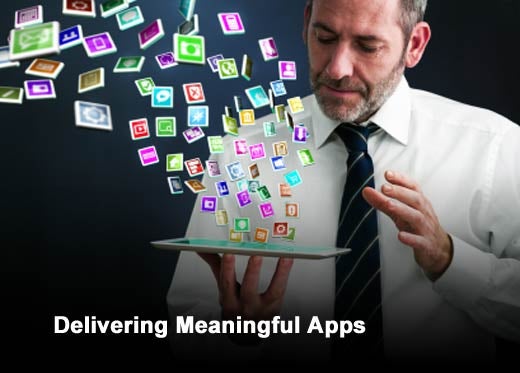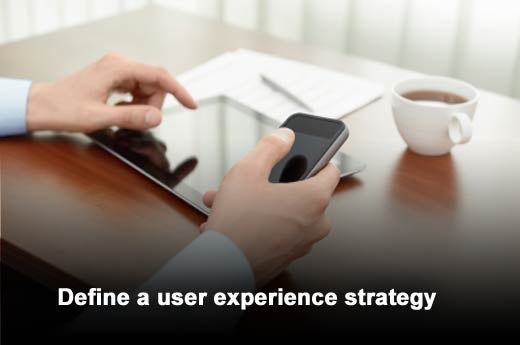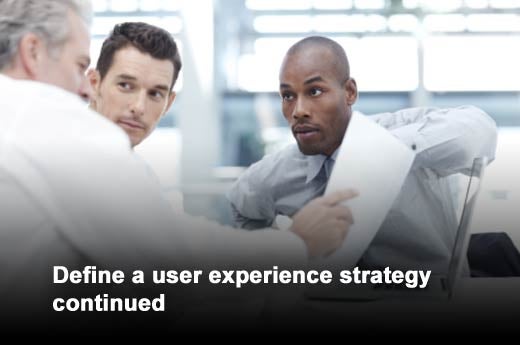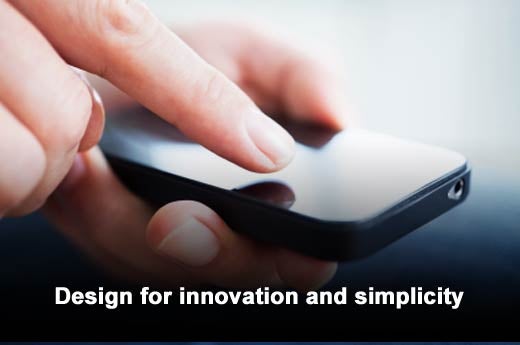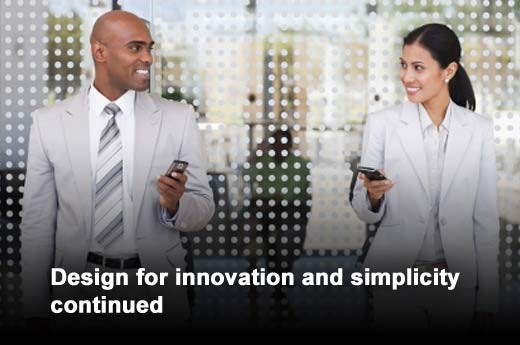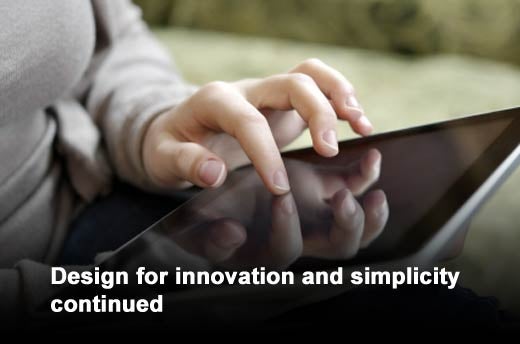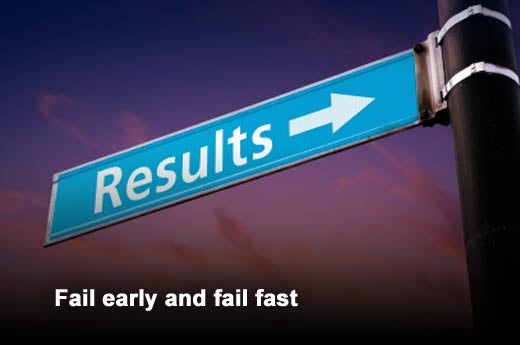Mobile applications are rapidly becoming the face of an organization. While traditional applications form the foundation of everything an enterprise does, many were not designed to provide a simple and intuitive experience for their users.
To remain relevant and competitive, organizations must leverage these foundational technologies to deliver meaningful and engaging experiences that connect their customers with the information they need, when they need it, and how they want it.
Building engaging apps requires close collaboration between design thinking and technology leadership. There are no easy fixes — good design requires a quality design process and leadership. Here are five tips, identified by Traci Terterian, user experience director at HP Enterprise Services, to help get you on your way to delivering more interactive, engaging experiences to your users.
Click through for five tips to help get you on your way to delivering more interactive, engaging experiences to your users, as identified by Traci Terterian, user experience director, HP Enterprise Services.
Tip 1: Define a user experience strategy
An engaging user experience doesn’t happen magically. It requires a clear and focused strategy that is linked to your business objectives. Work with business leaders and technologists to identify and link concrete, measurable user experience goals to the business goals for the app. Simply stating “we want to wow our users” is not enough. It’s not about delivering a great experience for the sake of a great experience. It’s about helping the business owners achieve value through a better experience to their users.
An investment in app transformation typically boils down to a few primary goals: to drive revenue, reduce costs or increase profit. At the outset of the project, collaborate with the business executives who lead the strategy. Identify exactly how the user experience will help achieve the business goals. For instance, if a goal is to reduce costs internally using the app, then one of your user experience (UX) goals may to be reduce the time it takes a user to complete a task. This is a tangible and measurable goal. Identify how you will measure the successful achievement of this goal. Today’s users are mature technology consumers that have high expectations. Beautiful graphics and fancy interactions mean nothing if they don’t simplify a task, anticipate needs or motivate desired behavior.
Once you have identified concrete, measurable goals, build out a strategy and roadmap to support it. This will assist you in focusing the budget, time and activities that actually move the needle for your business. A good user experience strategy includes:
- Experience goals
- Competitive analysis and industry trends
- Analytics and metrics
- User research activities (personas, testing, journey maps)
- Feature prioritization
- Prototyping and design plan
Tip 2: Embrace the power of user insight
Most everyone in the experience design world understands the power of user insight. It’s been a secret weapon for UX teams for decades. However, some companies are still skeptical about the value of user research. Why do we do it? Because we are not designing for ourselves. A designer who thinks they know their users without having done any research is a harbinger of catastrophe. It’s tempting to design with your own tastes and preferences. It’s even more arrogant to assume others aren’t tech-savvy or as well-informed. Different user groups have different mental models, needs and preferences. Embrace them and they will embrace your app. Ignore them and they will, rightfully, abandon your app.
There isn’t a set standard for how much to invest in user research. Devise an affordable research plan that aligns with your goals, budget and timeline (thank goodness you created that strategy). Use tools like journey mapping and user personas to transform your research into insight and drive user-centered thinking across your entire team.
Tip 3: Design for innovation and simplicity
User expectations in our connected culture require more than the static UI from five years ago. Today’s desired experiences are highly contextual and personalized. They deliver the right information, at the right time, to the right device — whenever and wherever the user wants it. They are adaptive. They anticipate, guide and motivate.
Additionally, today’s experiences require the use of touch, gestures, motion, and proximity — all delivered in the most unobtrusive and intuitive means possible. To be successful, the experience must be designed and evaluated according to the behaviors and habits of the end users within the varying contexts of their journey. (Aren’t you glad you have that user research?)
Before addressing look-and-feel or visual design, focus on defining the core user interaction model and architecture. Don’t underestimate the importance of design skill over technology skills. Armed with user insight and digital design skills, an experience architect creates low-fidelity sketches, blueprints, or prototypes that enable teams to visualize and validate the system flow and interactions. Keep this activity separate from visual design to focus on the labeling, structure, tasks and journeys.
In a separate, yet related work stream, begin visual design. UX visual designers work with your company’s brand manager to translate the brand into visual design for the app. Since an experience is defined by more than its form and function, the visual designer and the experience architect come together mid-way through design to prototype the end product, which is tested and evaluated before development begins.
Tip 4: Fail early and fail fast
One of the most effective ways to assure an engaging experience is through prototyping and testing. Design prototypes allow design teams to simulate and evaluate the end-user experience. They provide a way to quickly communicate designs and collaborate with users, technical teams and business owners. Use prototypes to test often and early. It is a fast, low-risk method to assure you got it right before you build. Encourage your design team to fail early and fail fast. This nurtures creativity, innovation and progress. Many user experience prototyping tools are available, each with their own unique benefits. The important thing is to institutionalize the concept of rapid prototyping and testing. Benefits include:
- Prototyping allows teams to visualize an experience, evaluate it with users, and iterate very quickly — to assure you got it right before you build.
- Detailed design prototypes reduce the need for complex, written design specifications for developers (which can be ambiguous, anyway.)
- Developers may be able to re-use HTML5 prototype code for the front-end design build-out, thus reducing time to market, reducing development cost, and reducing quality assurance testing.
Tip 5: Collaborate with the extended team
A good app experience requires much more than experience designers. It is only one component. Establishing quality processes and empowering cross-functional collaboration is key. Many non-functional components, like system response times and security, play a huge role in experience. It is important for project managers, business analysts, and technology leaders to work together to achieve the business goals. Some rules for quality collaboration:
- Avoid the thinking that you can hire a graphic designer to build a few pretty pictures and toss it over a wall to a development team who will “take it from there.”
- Engage mobile architects and business analysts in research briefings and design evaluations. They deliver subject matter expertise, process optimization ideas and technology innovation.
- Leverage those interactive prototypes, create design specifications, and build page templates for the development team. This empowers developers with the information they need to make the experience a reality.
- Consider implementing agile and other iterative design-build processes. The iterative nature of these processes can help detect and avoid issues early. Iterative processes foster team collaboration and complement the user-centered design methodology.


